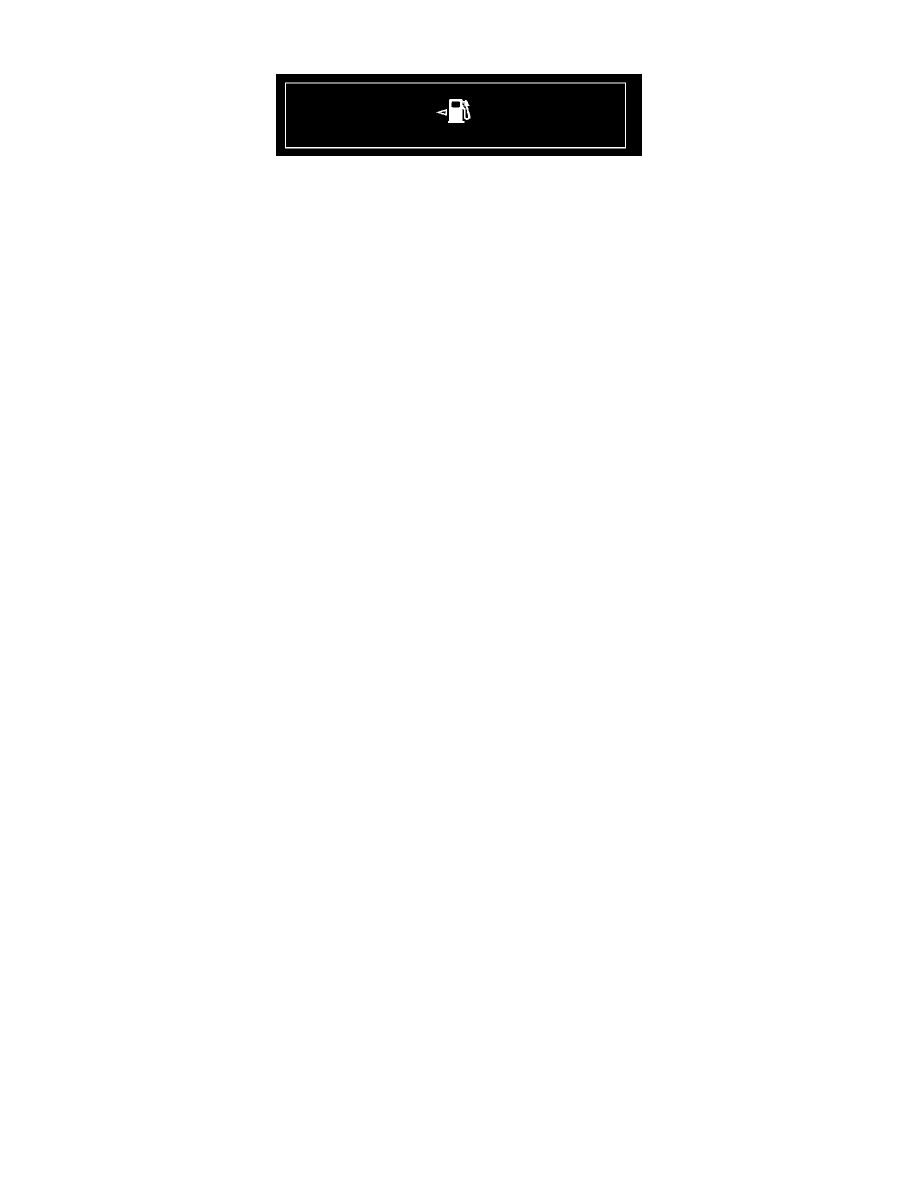Dakota 2WD V8-4.7L VIN J (2005)

Fuel Gauge: Description and Operation
A fuel gauge is standard equipment on all instrument clusters. This gauge is part of the minor gauge set with the engine coolant temperature gauge
located on the left side of the instrument cluster, just left of the speedometer. This gauge consists of a movable gauge needle or pointer controlled by the
instrument cluster circuitry and a fixed 90 degree gauge scale on the cluster overlay that reads bottom-to-top from "E" (or Empty) to "F" (or Full). An
International Control and Display Symbol icon for "Fuel" is located on the cluster overlay, in the center of the gauge directly below the bottom end of the
scale. An arrowhead pointed to the left side of the vehicle is imprinted on the cluster overlay next to the "Fuel" icon on the gauge to provide the driver
with a reminder as to the location of the fuel filler access.
The fuel gauge graphics are black against a white field except for a single red graduation at the low end of the gauge scale, making them clearly visible
within the instrument cluster in daylight. When illuminated from behind by the panel lamps dimmer controlled cluster illumination lighting with the
exterior lamps turned On, the white gauge dial face appears blue-green with the black graphics silhouetted against the illuminated background and the
red graphics and the red gauge needle still appear red. Gauge illumination is provided by an integral electro-luminescent lamp that is serviced as a unit
with the instrument cluster. The fuel gauge is serviced as a unit with the instrument cluster.
The fuel gauge gives an indication to the vehicle operator of the level of fuel in the fuel tank. This gauge is controlled by the instrument cluster circuit
board based upon cluster programming and a hard wired input received by the cluster from the fuel level sending unit on the fuel pump module in the
fuel tank.
The fuel gauge is an air core magnetic unit that receives battery current on the instrument cluster electronic circuit board through the fused ignition
switch output (run-start) circuit whenever the ignition switch is in the On or Start positions. The cluster is programmed to move the gauge needle back to
the low end of the scale after the ignition switch is turned to the Off position. The instrument cluster circuitry controls the gauge needle position and
provides the following features:
-
Fuel Level Sending Unit Input - The cluster provides a constant current source to the fuel level sending unit and monitors a return input on a fuel
level sense circuit. The resistance through the fuel level sending unit increases as the fuel level falls and decreases as the fuel level rises causing
changes in the sense input voltage. The cluster programming applies an algorithm to calculate the proper fuel gauge needle position based upon the
fuel level sense input, then moves the gauge needle to the proper relative position on the gauge scale. This algorithm is used to dampen gauge
needle movement against the negative effect that fuel sloshing within the fuel tank can have on accurate inputs from the fuel tank sending unit to
the cluster.
-
Less Than Fourteen Percent Tank Full Input - Each time the fuel level sense input to the cluster indicates the fuel tank is about fourteen percent
full or less for ten consecutive seconds and the vehicle speed is zero, or for sixty consecutive seconds and the vehicle speed is greater than zero,
the gauge needle is moved to about the one-sixteenth graduation on the gauge scale, the low fuel indicator is illuminated, and a single chime tone
is sounded. The low fuel indicator remains illuminated until the fuel level sense input indicates that the fuel tank is greater than about seventeen
percent full for ten consecutive seconds and the vehicle speed is zero, or for sixty consecutive seconds and the vehicle speed is greater than
zero, or until the ignition switch is turned to the Off position, whichever occurs first. The chime tone feature will only repeat during the same
ignition cycle if the low fuel indicator is cycled off and then on again by the appropriate inputs from the fuel level sending unit.
-
Less Than Empty Stop Input - Each time the cluster receives a fuel level sense input that indicates the fuel level in the fuel tank is less than the
Empty gauge needle stop position, the gauge needle is moved to the low end of the gauge scale and the low fuel indicator is illuminated
immediately. This input would indicate that the fuel level sense input to the cluster is a short circuit.
-
More Than Full Stop Input - Each time the cluster receives a fuel level sense input that indicates the fuel level in the fuel tank is more than the
Full gauge needle stop position, the gauge needle is moved to the low end of the gauge scale and the low fuel indicator is illuminated immediately.
This input would indicate that the fuel level sense input to the cluster is an open circuit.
-
Actuator Test - Each time the cluster is put through the actuator test, the fuel gauge needle will be swept to several calibration points on the gauge
scale in a prescribed sequence in order to confirm the functionality of the gauge and the cluster control circuitry.
The instrument cluster continually monitors the fuel tank sending unit to determine the level of fuel in the fuel tank. The cluster then sends the proper
fuel level messages to other electronic modules in the vehicle over the Controller Area Network (CAN) data bus. For further diagnosis of the fuel gauge
or the instrument cluster circuitry that controls the gauge, refer to testing.
For proper diagnosis of the fuel tank sending unit, the CAN data bus, or the electronic fuel level message outputs of the instrument cluster, a diagnostic
scan tool is required.
